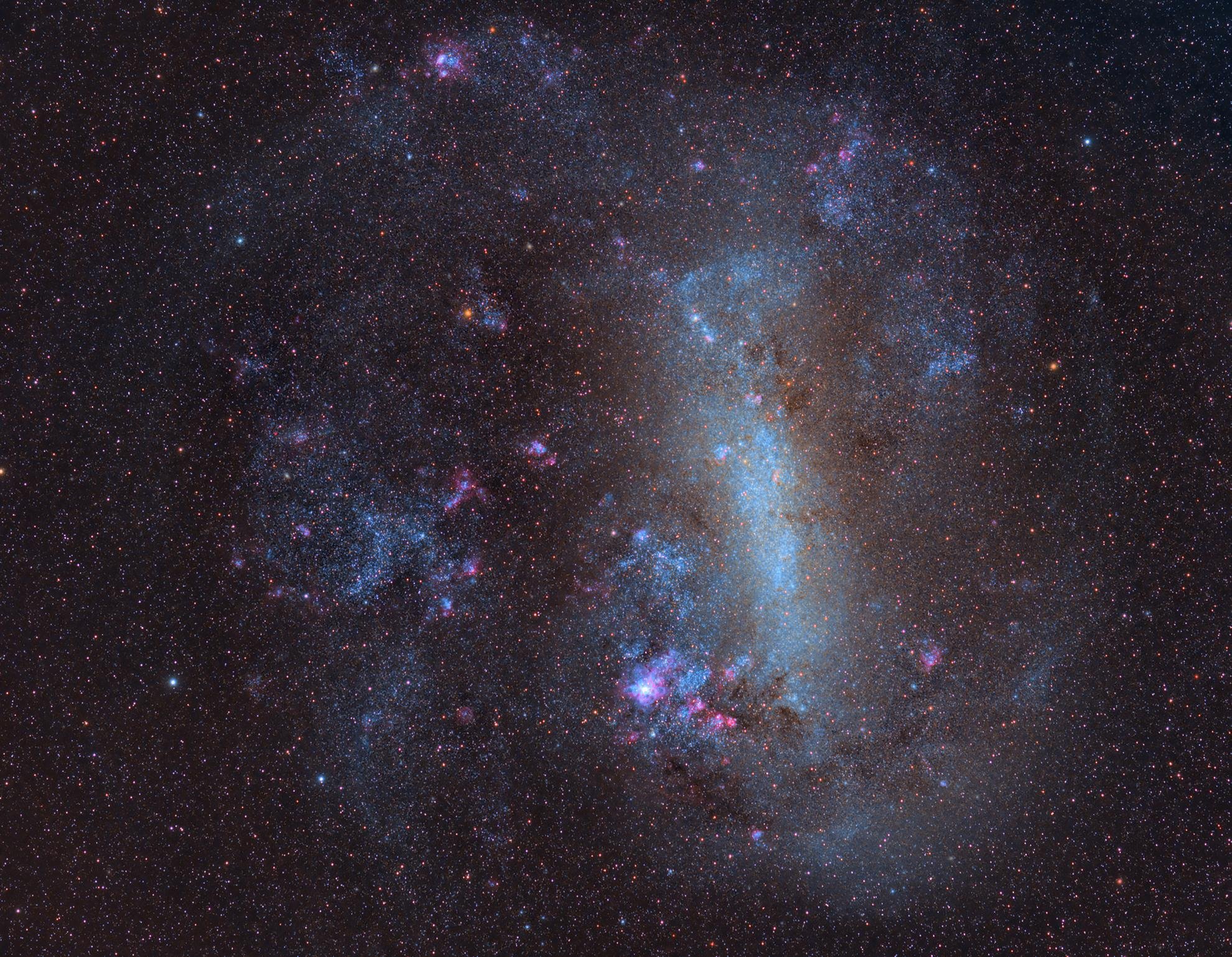TecMundo and #AstroMiniBR were selected, Some of the best astronomical facts of the weekproduced by collaborators profile in x To share the fantastic universe of astronomy with you. Check out!
#1: Irregular Galaxies in the Universe
When we think of galaxies, we think of a perfect spiral like the one in the first photo, right?
but about 20% of nearby galaxies are irregular galaxies like the other 3!
They are literally galaxies with irregular shapes and can be formed as a result of the interaction of galaxies.#AstroMiniBR pic.twitter.com/SjyUEOMHx2
— Giovanna Liberato (@liberato_gio) February 18, 2024
Irregular galaxies, incredible cosmic islands with wide morphological diversity, defy traditional structural patterns and present themselves as large chaotic accumulations of stars, dust and gas.
Unlike their more organized cousins, spirals and ellipticals, Irregular galaxies do not conform to a defined symmetrical shape, displaying a multitude of shapes and sizes. Many of these galaxies are believed to be subject to intense gravitational interactions that result in unique and unusual appearances.
Detailed observations of these systems reveal active star-forming regions with young star clusters, painting a dynamic picture of galactic evolution.
Although these irregular galaxies are a minority in number compared to more common galaxies, the number of irregular systems in the Universe is still significant: For example, it is estimated that there are several dozen irregular galaxies near the Milky Way.one of the closest to us.
The study of irregular galaxies provides a deeper understanding of the dynamic processes of galactic formation and evolution, as well as the Cosmos as a whole.
#2: The cosmic carnival has no end!
The carnival is over, but the Universe continues to radiate color and brightness?
An example of this is star-forming regions. The colors we see* depend on the composition of the gases present there, illuminated by the radiation of newly created stars#AstroMiniBR pic.twitter.com/pCWCdkYHfd
— Yanna Martins Franco (@martins_yanna) February 13, 2024
This year’s carnival may be over, but the color and brightness of the nebulae never ends! Nebulae are interstellar clouds composed of dust, gas, and energetic particles; They play a fundamental role in the life cycle of stars and the evolution of galaxies.
Stunning astronomical images of these structures In fact, it reveals a rich palette of vibrant colors that reflect complex physical and chemical processes. The reddish hues often associated with these nebulae are the result of ionized hydrogen emission and indicate regions of intense star formation activity.
As stars are born deep within these nebulae, they emit ultraviolet radiation, energizing the gas around them and presenting a visual landscape represented by bluer hues.
In addition to their striking beauty, star-forming nebulae represent cosmic laboratories where the essential elements of life are created, as interstellar material in nebulae condenses to form complete solar systems through a gravitational dance lasting millions of years.
#3: A deep blow to Saturn’s moon
Mimas is Saturn’s innermost orbiting moon and one of the most visible moons. #tricks Of the Solar System! The trick that created the Herschel crater, 139 km in diameter (1/3 of the total diameter of Mimas), nearly destroyed the satellite. #AstroMiniBR #macetando pic.twitter.com/yvRG8rrm6a
— Deep Sky Project (@CeuProfundo) February 18, 2024
Death Star? NO! What you see in the images above is Mimas, one of the natural satellites of Saturn, the lord of the rings in the solar system. This moon reveals a unique and intriguing feature that has attracted the attention of scientists for decades: Herschel crater, which has an impressive diameter of approximately 139 kilometersAbout one-third of the Moon’s total diameter.
The Herschel crater, which indeed gives Mimas a striking resemblance to the Death Star in Star Wars, raises fundamental questions about the formation process of natural satellites and related geological processes. The sharp edge and depth of the crater point to a major event in ancient times, possibly a violent impact that somehow did not completely shatter the little moon.
Analysis and study of celestial objects such as this are fundamental to better understanding the formation and evolution processes of our solar system.
Did you like the content? So, always stay updated on the latest astronomy curiosities here TecMundo. To the next one!
Source: Tec Mundo
I’m Blaine Morgan, an experienced journalist and writer with over 8 years of experience in the tech industry. My expertise lies in writing about technology news and trends, covering everything from cutting-edge gadgets to emerging software developments. I’ve written for several leading publications including Gadget Onus where I am an author.













